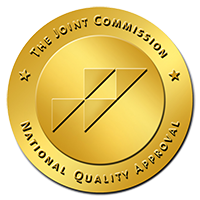Experiencing migraines? Here’s a possible option for treatment

The above illustration provides visual context for how the procedure is done and where the SPG nerve is located.
Migraines are invisible, so it is hard for people who have never had them to understand how debilitating they can be for those who suffer from them.
According to the Mayo Clinic, debilitating migraines affect 38 million Americans. Migraine headaches can last for hours or days, and affect sufferers in myriad ways, from visual aura symptoms to nausea, vomiting, and extreme sensitivity to light and sound. Medication is often prescribed to help relieve the pain or to help reduce occurrences.
But there is an alternative to medication for treating migraines. The way it works involves some rather large words; the blocking of signals from a nerve; and your nose.
The nerve that is treated is called the Sphenopalatine Ganglion Nerve (SPG). The SPG is associated with the Trigeminal Nerve, the major nerve involved in headache disorders. In cluster and migraine headaches, pain signals pass through the SPG. It’s located deep inside the nasal passage.
Box Butte General Hospital Director of Anesthesia and Pain Management Chuck Frisch, CRNA, DNP, reports that those who have acute or chronic migraines qualify for the treatment, involving the use of anesthetic applied to the SPG, which is accessed through the patient’s nasal cavity. “What we do is apply a local anesthetic to the nerve through your nose, using a cotton-tipped applicator,” he said. “First, we’ll apply a local anesthetic to your nose to reduce its feeling. Once your nasal passages are numb, we’ll apply the local anesthetic with the cotton tip applicator. The anesthetic essentially blocks signals from the nerve. Patients with acute migraines who come to the ER will have at least a 50 percent reduction of headache within 15 minutes of treatment. The relief is almost immediate and the migraine will completely go away for most patients.
How effective is a SPG block for acute migraine relief? A study conducted in 1996 indicated patients who experience parasympathetic symptoms (nausea, vomiting, excessive tearing, etc.) are good candidates for SPG blocking. The double-blinded placebo-controlled study included a total of 81 patients who fulfilled the criteria indicated. It found that 55 percent of patients had at least a 50 percent reduction of headache, compared to 21 percent of patients in the placebo control group. Nausea and photophobia (sensitivity to light) were significantly reduced as well. Less than a quarter of the patients receiving the anesthetic needed additional medication versus 71 percent in the control group. Finally, of those patients showing initial improvement, only 42 percent relapsed, while 83 percent did in the control group.
Chronic migraine sufferers would have to be referred to Chuck or any one of the other CRNAs at the hospital by their Primary Care Provider (PCP). “If experiencing chronic migraines (defined as migraines that occur at least 15 days per month for three months), they are probably being treated by their PCP with some form of drugs,” he said. “This SPG nerve block is an alternative to taking prescription medicine and dealing with their possible side effects. An SPG block essentially doesn’t have any side effects. The patient may experience a bitter taste from the anesthetic or some temporary numbness and hoarseness, but nothing serious.”
Chronic migraine treatments can be done in two ways: Twice a week for three weeks, or just once. “Research has shown that doing it twice a week for three weeks can bring relief that can last as long as four months,” Chuck said, “with an effective rate that’s pretty high, around 94 percent. And yes, most insurance will cover the treatments and as mentioned before, every one of our CRNA’s at BBGH can do the procedure. Finally, if your PCP isn’t familiar with this treatment, I would be happy to provide them detailed information about the procedure.”
Box Butte General Hospital is an equal opportunity provider and employer.


